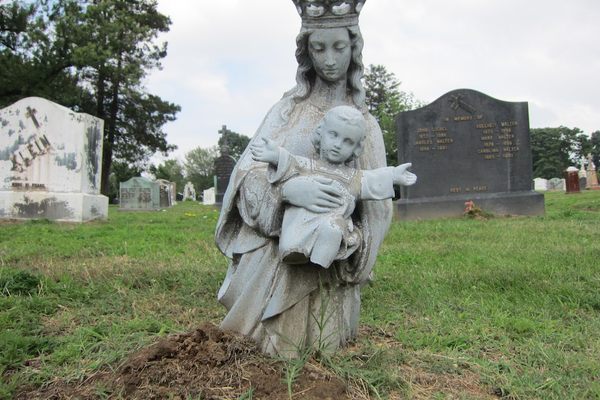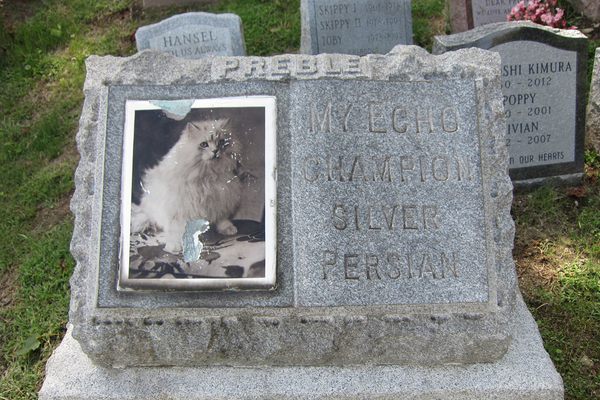Morbid Monday: Deciphering An Ominous Cryptogram on a Manhattan Tomb
Trinity Churchyard (all photographs by the author)
Squeezed between towering skyscrapers, Trinity Church in Lower Manhattan and its adjacent cemetery is a one-of-a-kind sanctuary, a curious contrast reminding us of the city’s past. Offering a pleasant oasis for Wall Street lunch breaks, the cemetery is often animated by snackers who overlook the macabre note of this setting they picked for eating their takeaway food. Lined up between the narrow pathways of the cemetery, every tombstone tells a different story. One of them, the grave of James Leeson, is a discreet, but peculiar, monument to esoteric Americana.
Born in 1756, Leeson died 38 years later, and nothing much is known of his life, even if it seems his grave has made him one of the more fascinating internments in Trinity. In fact, Leeson seems to enjoy a second existence through the attention he draws from a small gathering of curiosity enthusiasts, funeral art amateurs, and even… secret codes freaks. Nowadays half-damaged, the carved stone memorial still bears a few visual elements that gives us clues on our mystery man. Not much, but enough to puzzle the viewer.
James Leeson’s grave
With what did Leeson choose to decorate his last home? A winged hourglass, a classic in terms of funeral iconography, which stands for “Tempus Fugit” — time literally flees. Leeson wanted to remind the next generation that life is short. The flaming urn is here to inform us about the immortality of the soul, as the faithful Leeson believed. Finally, on the right side, are carved Masonic paraphernalia: a compass, a square, and a level, entangled together. Leeson was indeed a Mason. But unlike the many other Masons buried in Trinity Churchyard, Leeson’s grave has a cryptic bonus.
Bowing on the superior side of the tombstone is a suite of bizarre-looking pictograms, made out of dots and dashes. Is it some Venusian language, a black magic spell, or even a secret warning to prevent potential body snatchers? The answer would be published a century later, in 1899, in the publication of the Trinity Record. The square-like markings are in fact an example of a Free Mason cipher, pretty unique since the cuneiform code appears usually in esoteric manuals, to prevent profane access to information and keep rituals in secrecy.
The Pigpen Cypher also known as Masonic Cypher. From Secret New York - An Unusual Guide
Understood only by a minority at the time, the insoluble epitaph translates as “Remember Death.” A simple, but still striking, message left behind. Leeson could be remembered as the man warning the Masons, in the privacy of their own language, that even they will take part in the great dance of death.
REMEMBER DEATH: TRINITY CHURCHYARD, New York, New York
Morbid Mondays highlight macabre stories from around the world and through time, indulging in our morbid curiosity for stories from history’s darkest corners. Read more Morbid Mondays>
Join us on Twitter and follow our #morbidmonday hashtag, for new odd and macabre themes: Atlas Obscura on Twitter















Follow us on Twitter to get the latest on the world's hidden wonders.
Like us on Facebook to get the latest on the world's hidden wonders.
Follow us on Twitter Like us on Facebook